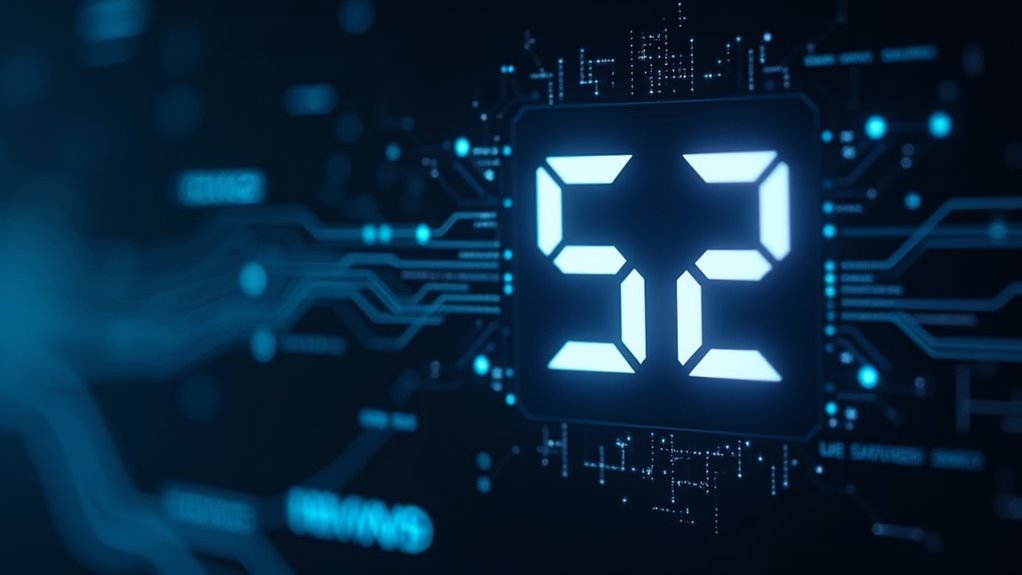ChatGPT transforms raw data into actionable insights without coding skills. It handles Excel, CSV, and JSON files, performs sentiment analysis, and generates visualizations—perfect for overwhelmed professionals. Yes, it streamlines business analysis across departments, but beware of “hallucinations” (AI-speak for making stuff up). Quality depends entirely on how you frame questions, and it lacks the nuance of human analysts. Think of it as your assistant, not your replacement. The full story reveals both powerful capabilities and concerning limitations.

Data overload—it’s the modern professional’s nightmare. As businesses grapple with mountains of information, ChatGPT has emerged as a powerful ally in data interpretation and analytical accuracy. This large language model, developed by OpenAI, offers a suite of capabilities that can transform raw data into actionable insights without requiring users to write a single line of code.
ChatGPT’s strength lies in its versatility. Got an Excel spreadsheet filled with customer feedback? Upload it (if you’ve sprung for that Plus subscription) and watch as the AI performs sentiment analysis, identifying patterns human eyes might miss.
Excel meets AI: Upload your data and unlock the hidden patterns human analysis might overlook.
Need to visualize quarterly sales figures? ChatGPT can generate charts using Python libraries like Pandas and Matplotlib. It’s like having a data scientist in your pocket, minus the coffee breaks.
The system supports multiple file formats including Excel, CSV, PDF, and JSON—though watch that file size, friend. Anything over 512MB, and you’re out of luck. For spreadsheets, the limit drops to a modest 50MB.
In practice, businesses are leveraging these capabilities for everything from revenue analysis to SEO improvements. Marketing teams can extract performance metrics while financial departments identify profit trends without advanced technical skills.
But let’s not get carried away. ChatGPT isn’t infallible. Data hallucinations—where the AI confidently presents incorrect information—remain a significant concern. The quality of analysis depends heavily on how well you frame your prompts. Garbage in, garbage out still applies, even with fancy AI. Despite promising potential, the conversational style of LLMs isn’t always optimal for structured data queries that require precision.
The future looks promising, though. With models like GPT-4 continuously improving and competitors developing specialized functions, we’re witnessing rapid evolution in the AI analysis space. This represents a significant shift from traditional methods that required extensive coding knowledge and complex software interfaces.
Smart businesses are incorporating these tools while maintaining human oversight—because while ChatGPT can crunch numbers faster than you can say “regression analysis,” it still lacks the nuanced understanding that experienced analysts bring to the table. Organizations must also address ethical considerations around privacy and bias when implementing AI-powered analytics solutions.
Use it as a powerful assistant, not a replacement, and you’ll strike gold in your data mining endeavors.
Frequently Asked Questions
Can Chatgpt Analyze Proprietary Datasets Uploaded by Users?
Yes, ChatGPT can analyze proprietary datasets uploaded by premium users. This functionality enables direct analysis of private data without public exposure, though with size limitations.
Organizations must consider data privacy implications before uploading sensitive information. User consent and proper security protocols should be established, as any data shared with external tools carries inherent risks.
For larger datasets, using external knowledge bases that integrate with ChatGPT often provides better results while maintaining data security.
How Does Chatgpt’s Data Analysis Compare to Traditional Statistical Software?
ChatGPT offers superior natural language processing and user interaction compared to traditional statistical software, making complex analysis accessible to non-experts.
However, it lacks the computational power and reliability of established programs like SPSS or R.
While ChatGPT excels at simple visualizations and basic statistics through conversation, traditional software provides greater precision, consistency, and advanced modeling capabilities.
Think of ChatGPT as the friendly, approachable assistant versus traditional software’s role as the meticulous, specialized expert.
What Are Chatgpt’s Limitations When Interpreting Complex Statistical Models?
ChatGPT struggles greatly with statistical nuances in complex models.
It can’t properly evaluate model assumptions or identify confounding variables that human statisticians spot instantly.
Think your AI assistant can handle multivariate regression? Think again.
ChatGPT frequently miscalculates ANOVA tests and fails at large dataset interpretation.
Its inability to process visual data or real-time information further limits its usefulness.
Can Chatgpt Generate Visualizations From Analyzed Data?
Yes, ChatGPT can generate data visualization from analyzed data, creating automated charts with simple English commands. No coding required!
It produces bar charts, line graphs, pie charts, and even fancier visualizations like heatmaps. Just tell it what you want—”Show me a bar chart of sales by quarter”—and voilà!
While these visuals appear directly in chat, they’re typically static images rather than interactive elements. Not bad for an AI without dedicated graphing tools, right?
How Accurate Is Chatgpt When Identifying Outliers in Datasets?
ChatGPT’s outlier detection accuracy is moderate at best. It can spot obvious statistical anomalies but often misses context-dependent outliers that humans would catch immediately.
The model’s non-deterministic nature makes data accuracy inconsistent—sometimes it nails it, other times it’s wildly off base. For serious analysis? Don’t trust it blindly. Always double-check its findings with specialized tools or human expertise.
Think of ChatGPT as your statistical assistant, not your statistical authority.









